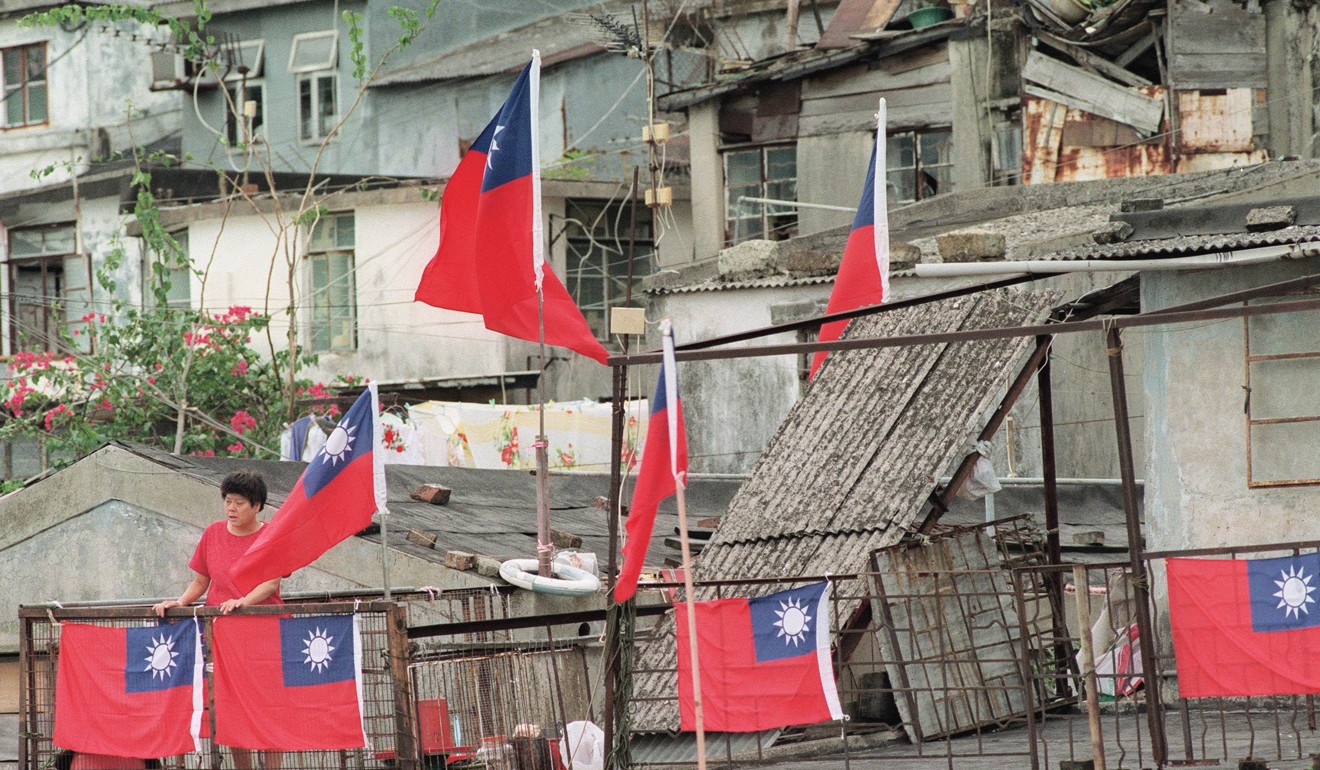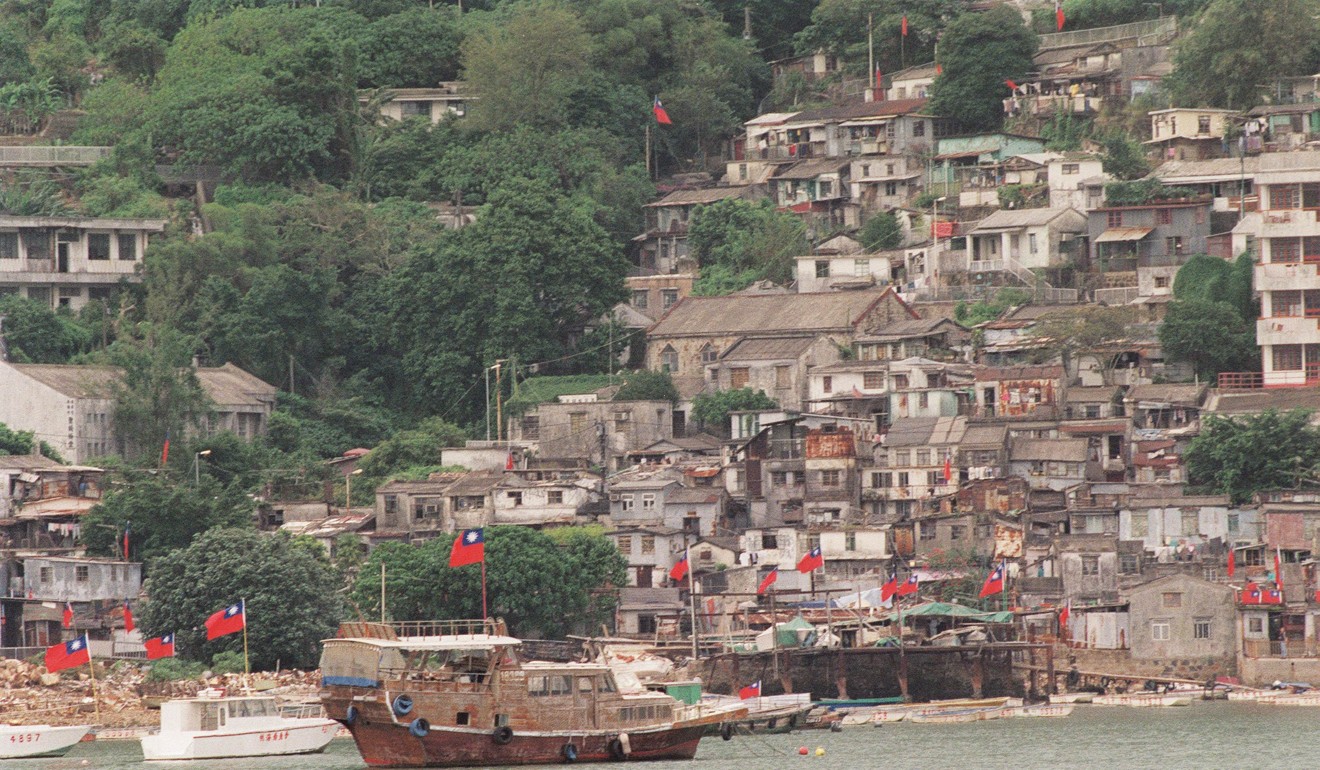
Old soldier’s hopes for one China grow as Double Tenth celebration in Hong Kong draws more young people
Kuomintang veteran who fled to Hong Kong as a boy recalls ‘lively’ past celebrations in city’s New Territories to mark anniversary of revolution that ended dynastic rule in China
On the office walls of the Kuomintang association’s Hong Kong chapter in Sham Shui Po are pictures of Ng Hon-lim from when he was 27 years old.
In one large black-and-white photograph, he stands wearing a black mandarin collared suit, looking determined and proud.
His family fled to Hong Kong in 1950 to escape communist China, when Ng was 11, and they eked out a living tilling fields in Fanling.
Is it one birthday, two Chinas?
“When I decided to go to Taiwan to study, people either gave me lai see packets of HK$10, or crisp white shirts. I remember getting eight to 10 shirts when I was leaving,” he recalls with a smile.
However, because his family could not afford the tuition, after graduation Ng had to do three years of military service in Taiwan.
Now 78, Ng recalls how the physical training was tough, but instilled discipline. His time on the island also inspired in him deep admiration for Dr Sun Yat-sen, the founding president of the Chinese republic, who is known as the “Father of the Nation”.
Every year on October 10, or “Double Tenth” – the national day of the Republic of China – Ng attends the Hong Kong ceremony marking the anniversary at Zhongshan Park in Tuen Mun.
When the KMT lost the Chinese civil war in 1949 and it supporters, along with the Republic of China government, fled mainland China for Taiwan, tens of thousands of soldiers, civil servants and their families settled there. (Taiwan continues to call itself the Republic of China, but the Chinese government considers Taiwan to be a renegade province of the People’s Republic of China.)

Many KMT supporters in southern China sought refuge in Hong Kong – and many settled at Rennie’s Mill in the southeast of the New Territories. In 1996, with the restoration of Chinese rule over Hong Kong a year away, the villagers were evicted to make way for a housing estate, and the area was renamed Tiu Keng Leng.
Memories of a haven for Nationalists
Hong Kong’s KMT sympathisers have continued to mark the Double Tenth anniversary, which commemorates the start of the Wuchang Uprising on October 10, 1911, that led to the downfall of the Qing dynasty.

“Before 1997 the atmosphere was so lively, with [Taiwanese] flags lined up along the streets [at Rennie’s Mill], and restaurants would have them displayed outside. We’d have events going on during the day and a big banquet in the evening,” the former soldier recalls.
In some years, up to 1,000 people took part in festivities in Tuen Mun that included singing nationalistic songs and raising the flag.

Since the 1997 handover, however, the Hong Kong government has discouraged KMT supporters from decorating the streets with Taiwanese flags, says Yuen Long district councillor Mak Ip-sing, who studied at a Taiwanese university. Mak’s grandfather was a KMT soldier in Guangdong during Sun’s time.
“After 1997, there have been no specific rules, but we can’t rent spaces on government land or in buildings. Renting out restaurants is no problem, but we can’t put flags on the streets,” says Mak, who has been the main organiser of the Double Tenth ceremonies in Hong Kong since the handover.
“If they see the Taiwanese flags, the authorities will clear them, saying it’s for safety reasons, even though there is no specific law against putting them up. The other day we were in a Tseung Kwan O housing estate to celebrate and put flags up, but the housing estate managers told us to take them down.”
Before 1997 the atmosphere was so lively, with [Taiwanese] flags lined up along the streets [at Rennie’s Mill], and restaurants would have them displayed outside
Mak says KMT supporters are disappointed, but the government’s reaction is to be expected.
“The government is anxious not to upset Beijing, which is why they are doing this. But our goal is ‘one China’. Perhaps the Hong Kong government isn’t sure how to deal with this situation and is erring on the side of caution.”
Nevertheless, since 2000, Mak has observed ever more secondary school and university students attending Double Tenth ceremonies, and in particular following the 2014 Occupy Central protests. More than half of the attendees are now young people.
“This is interesting because they don’t have any direct links with Taiwan except for having travelled there for holidays. I think it’s because they appreciate the democratic system in place in Taiwan,” says Mak.
The rise in attendance by young people gives former KMT soldier Ng more optimism for the future.
“We still mark the anniversary every year, not because we are against the communist government on the mainland. We still want reunification. We seniors won’t see reunification in our lifetimes, but possibly our grandchildren will witness it one day,” he says.

